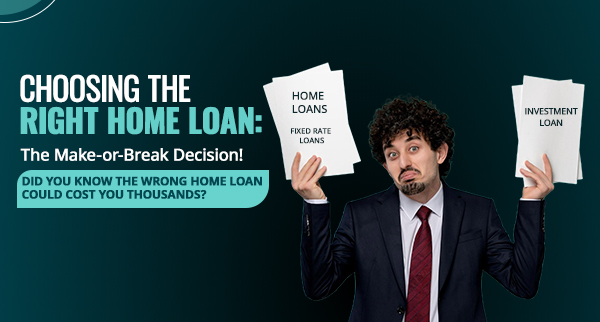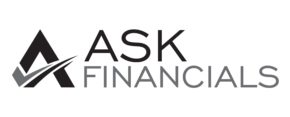There is no “one size fits all” solution for house financing. Making the appropriate option requires a thorough understanding of the intricacies of various loan forms.
One example is the difference in terms between investment loans, which are mostly for buying rental properties, and owner-occupier house loans, which are geared towards people buying their main homes.
You should consider your individual situation when weighing your alternatives for a loan, whether it’s a fixed-rate or variable-rate loan, or a more speciality loan like a green house loan or an SMSF loan.
Before moving to the different types of home loans, it is important to know why you want to refinance?
Types of Home Loans
Main forms of Australian house loans
Owner Occupied Home Loan
Owner-occupier home loans are for those buying their principal dwelling. These loans have better terms and interest rates than investment house loans because lenders see them as less risky.
Homeowners may pick from fixed, variable, and split interest rate owner-occupier house loans to suit their needs.
Investment Loan
A main home is not the intended use of an investment loan; rather, it is for the purchase of an investment property. Because of the increased risk involved, the terms and interest rates of these loans may vary from those of owner-occupier loans. They may have more stringent requirements for qualifying and often demand a larger deposit.
Investment loans with interest only are popular among investors because of the potential tax advantages associated with them. This is due to the fact that interest payments may be claimed as a tax deduction, according to the Australian Taxation Office (ATO).their objectives and financial status.
Fixed-rate Loans
Fixed-rate home loans are useful for predictability or cheap rates. They provide security by setting your repayments for one to five years. This prevents monthly budget shocks from interest rate changes.
The protection against increasing interest rates is a major advantage of a fixed-rate loan. Fixed-rate borrowers pay their lower interest rate even if the cash rate rises and market rates follow. In the event that the official cash rate decreases and the market follows, borrowers are locked into a higher rate.
Break charges and restrictions on additional repayments make fixed home loans less flexible than variable rate loans. Basic fixed rate loans have fewer features but lower rates, whereas standard fixed rate loans may have offset accounts but have higher rates.
Variable-rate loans
Variable-rate home loans fluctuate with the market. This shift frequently follows economic developments like the Reserve Bank of Australia’s cash rate. Riding the economic waves is good when rates fall but requires a cushion when they increase. It’s ideal for folks who like uncertainty and want to take advantage of cheaper rates.
Flexibility defines variable-rate loans. Some enable free extra repayments, reducing the total interest paid throughout the term. This feature may appeal to people who expect financial improvement or want to pay off their mortgage quicker.
Variable rate loans include several customisable options. Offset accounts lower interest by balancing the loan debt against the money in these accounts, while redraw capabilities let borrowers access additional payments.
Green Home Loan
Green home loans, a novel mortgage product, promote eco-friendly living, minimise energy usage, and cut homeowners’ carbon footprints.
Green house loans usually provide lower interest rates or other financial incentives for energy-efficient or sustainable dwellings. Solar panel installations, energy-efficient HVAC systems, and sustainable construction materials may be considered.
Construction loans
Construction loans are designed for homebuilding and renovation. They distribute cash incrementally as development develops, unlike typical house loans. Progressive drawdown lets you just pay interest on the money you use at each step, making it more cost-effective.
Constructing loans are tailored to the foundation, framework, and interior phases of construction. Before releasing cash, the lender usually needs inspections. After construction, the loan normally becomes a conventional house loan.
This loan is perfect for building a new home or doing major renovations since it provides structured financing.
Bridging loans
Bridging loans let buyers buy a new home before selling their old one. These loans ‘bridge’ the financial gap between purchasing a new property and selling the old one. They have higher interest rates than normal house loans and last up to 12 months. Most borrowers pay interest only during the term and pay the principal after selling the property.
Those who locate their ideal house but haven’t sold their present one benefit from bridging loans. Due to their short duration and high charges, bridging loans demand careful financial preparation.
Low-deposit loans
High loan-to-value ratio (LVR) low deposit home loans are for borrowers without a 20% deposit. These loans allow first-time buyers and people with minimal funds to purchase a property with a 5% deposit.
Lender mortgage insurance (LMI) is typically required for these loans due to the increased risk of a lower deposit. This insurance might raise borrowing costs significantly.
Low deposit loans may help borrowers enter the property market, but they should be aware of the higher interest rates and LMI and make sure they can afford them.
Line of Credit Loans
A line of credit home loan lets homeowners use their property’s equity like a credit card with a limit. Borrowers may borrow up to the maximum, repay, and redraw as required with this loan type. Improves ongoing expenditures like upgrades and investments.
This needs rigorous financial management since debt may accrue fast if not handled properly. Interest rates on these loans depend on the amount utilised and may be higher than normal house loans.
Non-conforming loans
Non-conforming loans are for borrowers with bad credit, inconsistent income, or self-employment. These loans may help underserved borrowers become homeowners.
However, lenders charge higher interest rates and costs for non-conforming loans to cover the risk. These loans are a final alternative for folks who cannot get a regular loan and may help rehabilitate credit or acquire finance in difficult situations.
Low-doc loans
Self-employed and small company entrepreneurs may not have the income evidence needed for regular house loans, thus low-doc loans are available. These loans use bank data or accountant’s declarations to determine a borrower’s capacity to repay.
Low-doc loans may help those with sporadic income, but they usually have higher interest rates and costs owing to the lender’s risk. To qualify, borrowers may require a larger deposit or property equity.
Loans with interest only
An interest-only house loan is a mortgage repayment type in which the borrower only pays the interest on the loan amount for a defined time, generally one to five years. The principle is not reduced during this time since payments are not made. Investors focusing on cash flow management may choose this loan since it has fewer monthly instalments than a principle and interest (P&I) loan.
The loan usually becomes a P&I loan after the interest-only phase, with repayments rising as the borrower pays down the debt. If property prices don’t grow, the borrower may have no equity in the property after the interest-only term. Interest-only loans are best for investors who plan to own the property for a short time or foresee a large revenue increase.
Loans with principal and interest
P&I house loans are the basic mortgage repayment type, including both the principal and interest. The loan balance reduces steadily with this arrangement.
The interest component initially dominates the payments, but as the principle declines, it diminishes and the principal repayment grows. Due to its complete loan repayment throughout the period, this loan type is suitable for slowly building home equity.
P&I loans are popular for long-term property investments and house ownership.
Split loans
Not sure between fixed and variable? Split home loans provide the best of both worlds. This loan enables consumers to split their loan amount between fixed and variable interest rates. It gives borrowers protection and flexibility by hedging interest rate bets.
Borrowers may divide their loan 50/50 or differently depending on their financial status and risk tolerance.
Borrowers who are unclear about interest rates or wish to limit risk can choose a split loan. It’s also good for folks who want regular repayments but yet want the flexibility of a variable loan, such as making additional payments without fees.
Home loan niches SMSF loans
SMSF house loans enable SMSFs to borrow money for property investment. Tight financial and legal controls regulate these loans. SMSFs may use their money to buy property for rental income and capital growth.
These loans need a larger deposit and higher interest rates than regular house loans. SMSF trustees must carefully analyse the ramifications, complying with superannuation legislation and reviewing the fund’s borrowing capacity.
Reverse mortgages
Reverse mortgages enable senior homeowners to borrow against their home’s equity without selling it. Reverse mortgages are provided to borrowers over 60 and offer lump sums, recurring income streams, lines of credit, or a mix of these. The borrower pays back the loan and interest when they sell, relocate, or die.
Interest accumulates over the loan, increasing the amount owing. As the loan sum rises, home equity falls. Reverse mortgages provide a ‘no negative equity guarantee’ to prevent borrowers from owing more than their house is worth.
Retirees who wish to augment their income, make home upgrades, or cover healthcare bills while living in their home consider reverse mortgages. However, prospective borrowers should examine the long-term financial effects on their inheritance and pension eligibility.
Picking the perfect home loan type
There are so many different types of home loan products in Australia! Choosing the right one for you really depends on what kind of borrower you are and the type of property you want to buy. For instance, you can’t secure an investment home loan for a property where you plan to live permanently, just like it wouldn’t be practical to opt for a low-doc or non-conforming loan if you can easily show proof of income in your application.
Finding a loan with a great interest rate and choosing the right type that fits your unique situation is really important! When considering a fixed, variable, or any specialised loan type, it’s important to think about how well it aligns with your financial situation, lifestyle, and property aspirations. It’s not just about getting the lowest rate; it’s about discovering the perfect balance between competitive rates and what works best for your individual needs.
If you find this article useful then you can check out our in-depth articles on our website.Want to know how you could save thousands on your mortgage? Book a free chat with ASK Financials today!


